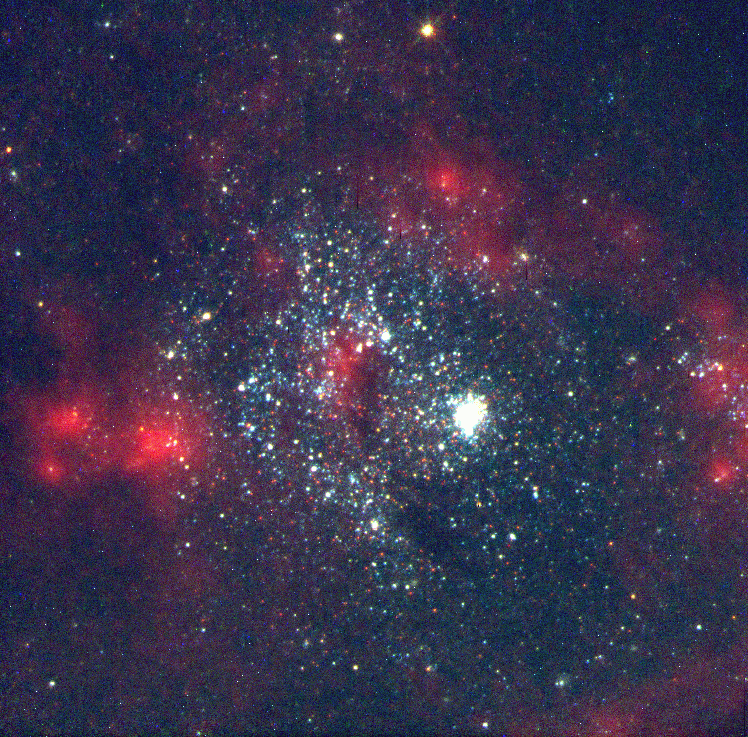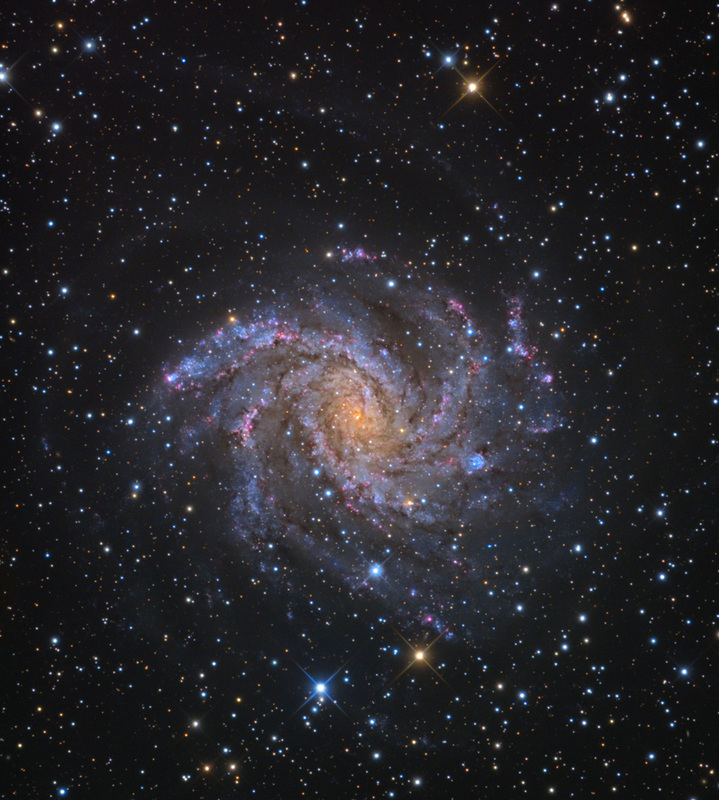I'm always glad to see a beautiful portrait of a remarkable galaxy by one of the truly great RGB astrophotographers, Robert Gendler!

APOD. Robot wrote:
In fact, since the early 20th century at least nine supernovae, the death explosions of massive stars, were discovered in NGC 6946.
Rochesterastronomy wrote:
NGC 6946 is also known as the fireworks galaxy. This is our most prolific galaxy with now
10 confirmed supernovae discovered.
APOD Robot wrote:
The big, beautiful spiral galaxy is located just 10 million light-years away, behind a veil of foreground dust and stars in the high and far-off constellation of Cepheus.
NED Search wrote:
NGC 6946, Mean Metric Distance: 5.545 Mpc
Median Metric distance: 5.385 Mpc
Minimum Metric distance: 4.020 Mpc
A metric distance of 5.385 Mpc corresponds to about
17 or 18 million light-years. A minimum distance of 4.020 Mpc is equivalent to about
13 million light-years.
The distance to NGC 6946 is interesting, because if it is no more than 10 million light-years, NGC 6946 must be a quite small galaxy. But if the distance is as large as 18 million light-years, the galaxy may be about the same size as the Milky Way.
Giant cluster in NGC 6946. Photo: HST.
My amateur impression of NGC 6946 is that it is mostly a post-starbirth galaxy. That is why we see so many supernovas in it. But there is only one really huge star cluster in it, which, on the other hand, is tremendous.
Søren S. Larsen wrote:
On the PC image you can see an extremely bright young star cluster (slightly to the right of the centre of the image) with an estimated mass of about 1 million solar masses and an age of about 15 million years.
According to the
Wikipedia page on R136 in the Large Magellanic Cloud, the mass of the largest young cluster in the Local Group is estimated to be "only" 450,000 M
☉, making the heavyweight of the Large Magellanic Cloud only half the mass of the young supercluster in NGC 6946. But R136 is much younger than the cluster in NGC 6946, only about 2 million years.
NGC 6946. Photo: Adam Block.
It has been said that NGC 6946 is significantly reddened by dust in our own galaxy. That is undoubtedly true, but it is clear from good color pictures that the giant cluster in NGC 6946 is a truly unique feature which is much bluer than the rest of the galaxy. To see a particularly good picture of the color difference between the cluster and the rest of the galaxy, go to
this page and scroll down to the sixth picture from the top. The color of the giant cluster jumps out at you. But the color difference between the cluster and the galaxy is apparent in the picture by Adam Block at right, too.
While NGC 6946 is reddened by dust in our own galaxy, it undoubtedly produces a lot of dust on its own, too. Star formation makes dust, and NGC 6946 has produced a lot of stars over the years.
I'm very glad to see a fine picture of such as fascinating galaxy as NGC 6946 featured as the APOD of today!
Ann
 Facing NGC 6946
Facing NGC 6946
